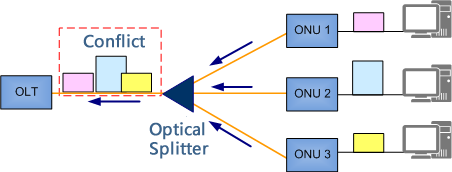In fiber-optic communication networks, the Optical Line Terminal (OLT) plays a crucial role as the central aggregation point for data transmission. Understanding the relationship between the OLT upstream port, PON (Passive Optical Network) port, and downstream Optical Network Units (ONUs) is essential for effective network planning and optimization.
First, it's important to clarify that the rates of the OLT upstream port, PON port, and ONUs are not directly related in a simple arithmetic sense. The upstream port of the OLT is responsible for carrying data from the PON ports向上游传输, towards the core network or aggregation switches. The PON port, on the other hand, serves as the interface between the OLT and the downstream ONUs, facilitating data transmission in both directions.
The ONUs, typically located at customer premises, have individual rates that depend on the service level agreement (SLA) and the capabilities of the specific equipment. However, these individual ONU rates do not directly add up to determine the rate of the PON port or the upstream port of the OLT.
Instead, the relationship between these rates is more complex and involves several factors. One key aspect is the concept of convergence. As data from multiple ONUs is aggregated at the PON port and then transmitted upstream, there is a convergence of data streams. This means that the aggregate data rate at the PON port can be significantly higher than the individual rates of the ONUs, but it is not a simple sum of those rates.
Another important factor is the bandwidth management and scheduling mechanisms employed by the OLT and the network management system. These mechanisms ensure that data is efficiently transmitted, prioritized, and allocated among the ONUs, taking into account the varying demands and traffic patterns.
Furthermore, the capacity of the upstream port of the OLT is determined by the design and specifications of the equipment and the overall network architecture. It must be sufficient to handle the aggregated data traffic from all the PON ports connected to it.

In summary, the relationship between the OLT upstream port, PON port, and downstream ONU rates is not a straightforward one. It involves convergence of data streams, bandwidth management, and the overall network design. Understanding these relationships is crucial for network planners and operators to ensure efficient and reliable data transmission in fiber-optic communication networks.


